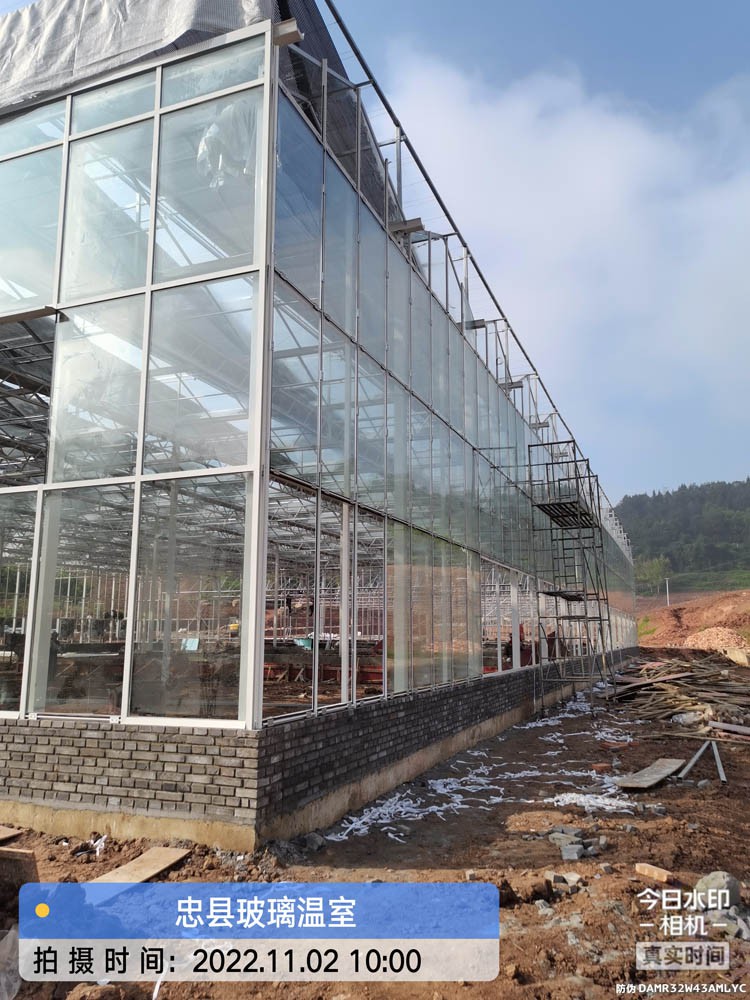Vegetable Irrigation Technology in Solar Greenhouse
1 Grasp the irrigation time
Pay attention to watch the weather forecast, you can get several consecutive sunny days after watering. The watering time in autumn and winter is generally chosen in the morning on a sunny day, because the difference between the water temperature and the ground temperature in the morning is small, the ground temperature is easy to recover, and the soil has sufficient time to drain moisture. The later stage can be carried out in the afternoon, which is beneficial to reduce the ground temperature. Generally, it is not suitable to water in the evening. Watering should be stopped in cloudy, rainy, snowy or cold weather, otherwise it will cause excessive humidity in the shed and cause diseases.
2 Control the irrigation water temperature
The greenhouse should be irrigated with underground well water or cellar water, and the temperature of the irrigation water should not be lower than 2-3 ℃. Do not use cold water from rivers, reservoirs and ponds for irrigation. Warm water at around 20°C is suitable for vegetable planting, and the water temperature should be as close as possible to the ground temperature at that time for normal irrigation. A reservoir is built in the shed for water storage and irrigation to reduce the difference between water temperature and ground temperature.
3 Master the amount of irrigation water
When the water in greenhouse vegetables is seriously insufficient, the plants will wilt and the leaves will be scorched. When there is too much water, the root system will suffocate and rot due to the lack of oxygen in the soil, and the stems and leaves above the ground will turn yellow or even die. Different crops or the same crop have different water requirements in different periods, so the amount of irrigation water must be consistent with the type of crop, the growth stage of the crop, and the tolerance of the root system of the crop. The general principle is to irrigate frequently with small water. Autumn, winter and early spring fruit and vegetable irrigation can be roughly divided into 4 stages. The first stage is about 10 days at the beginning of planting. The soil moisture content should reach more than 25%, and the water should be watered enough. For seedling control, the soil moisture content is required to be about 20%; in the third stage, the water content should be about 23% from the early harvesting period to the peak fruiting period for about 80 days; in the fourth stage, the soil moisture content is required to be about 20% in the middle and late stages of fruiting At this time, the outside temperature is high, the air volume is large, and the soil moisture evaporates quickly, so the frequency of irrigation should be increased. The detection of soil moisture should be strengthened to ensure neither excessive irrigation nor water shortage.
4 Select the appropriate irrigation technology
Drip irrigation technology should be selected for vegetable irrigation in greenhouses, and drip irrigation under mulch should be used for crops planted under mulch. Because drip irrigation can directly transport water to the roots of crops, it can effectively control water, reduce deep soil leakage and fertilizer loss, do not damage the soil structure, and have good ventilation. It has an upward effect, which can effectively control the air humidity in the shed, reduce the occurrence of diseases and insect pests, maintain effective light and heat resources, promote the growth and development of crops, and help increase crop production and improve vegetable quality. If there is no drip irrigation equipment, the furrow irrigation technology under the mulch can be used. It is not suitable to use micro-spray irrigation in greenhouses, because the high degree of micro-spraying will increase the air humidity in the greenhouse and cause diseases of vegetables. Avoid flooding.
5 Pay attention to post-irrigation management








